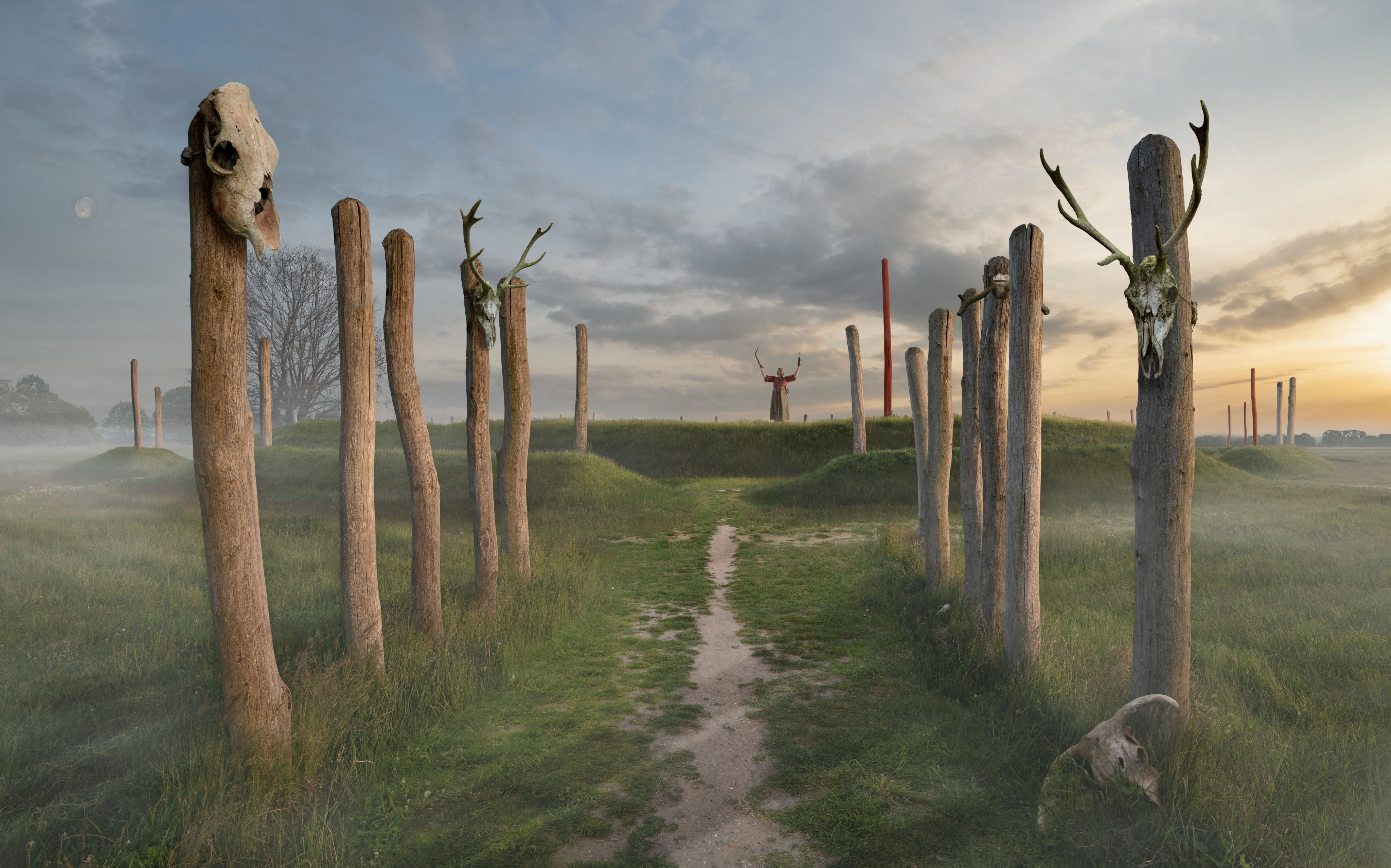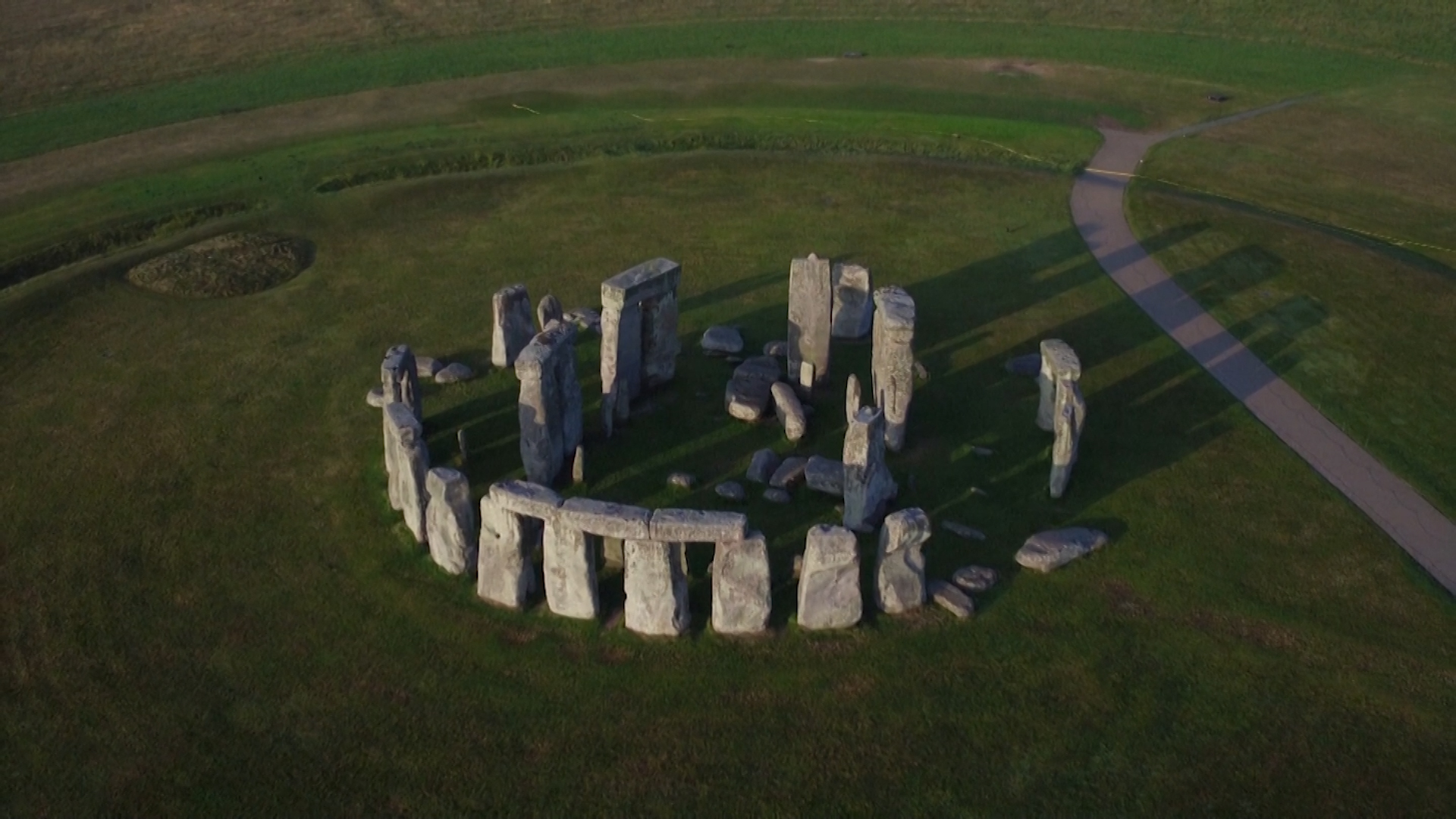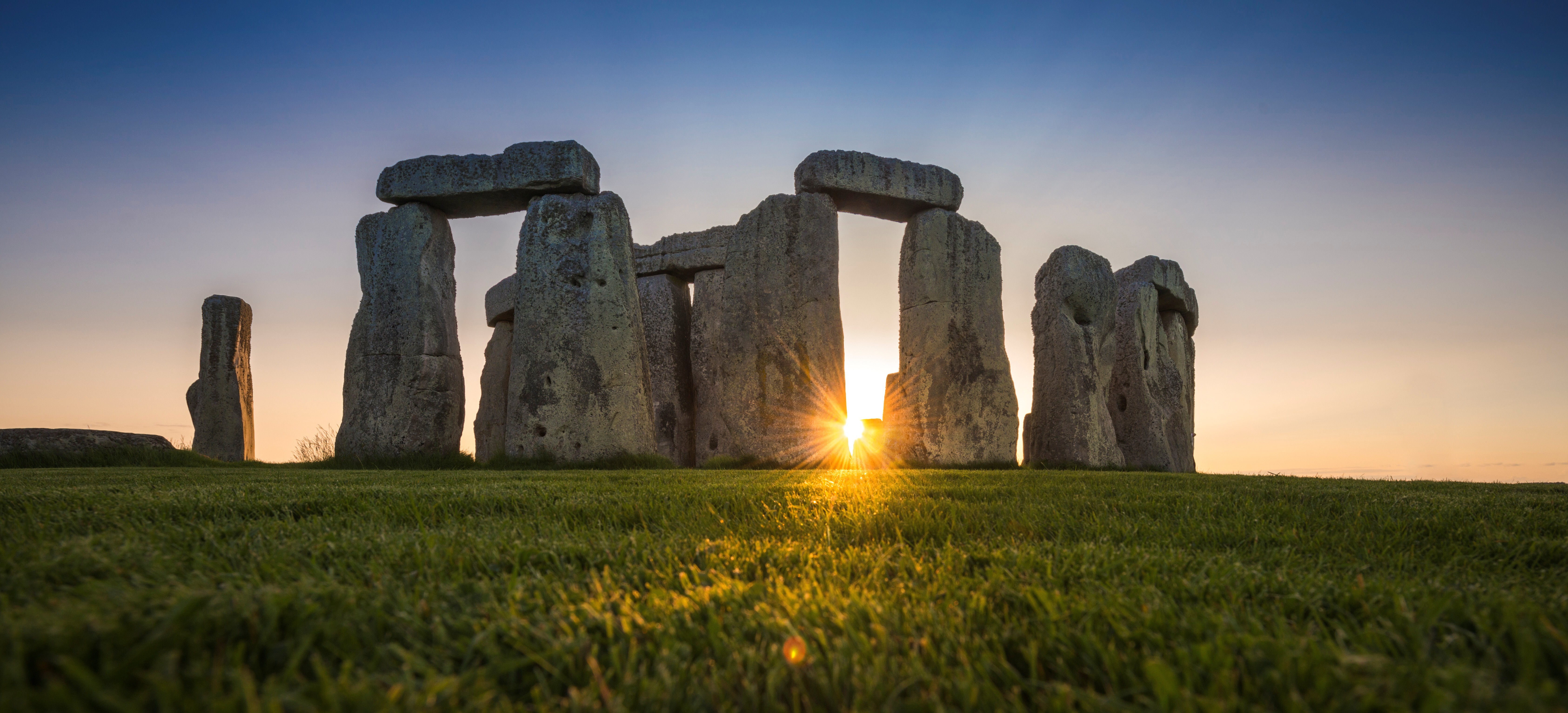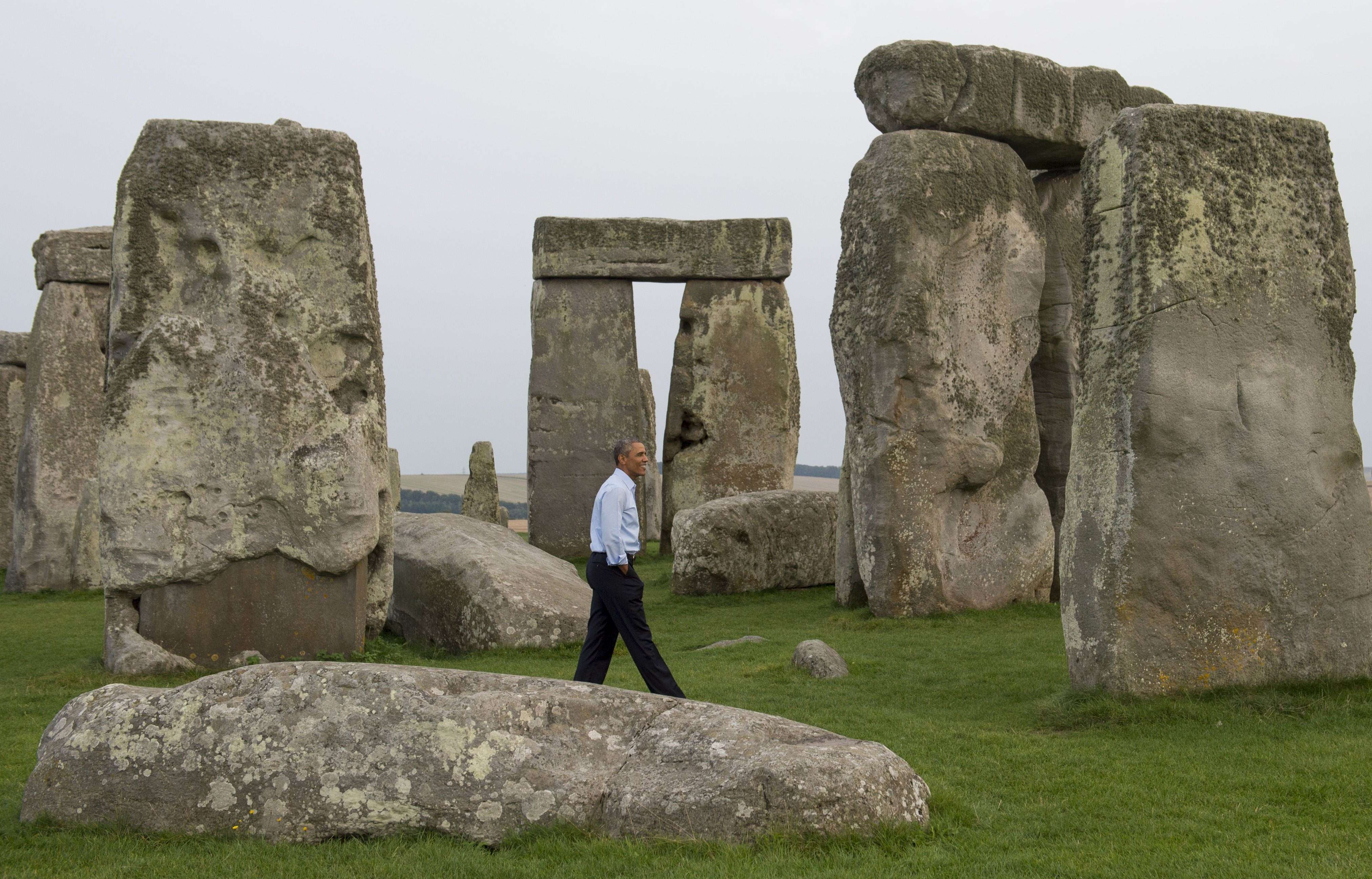
Topic

Stonehenge is a prehistoric monument and UNESCO World Heritage site located in Wiltshire, southern England. Archaeologists believe it was built in three stages anywhere between 3000 BC to 2000 BC. The monument is constructed of Bluestone, Sarsen, Welsh Sandstone which stand in a ring. It is not known why or how Stonehenge was constructed - some believe it was a place of healing while others claim it is a burial place. It attracts millions of visitors each year.
- The open-air sanctuary includes a large burial mound serving as a solar calendar, with several passages through which the sun shone on certain days of the year
- Archaeologists say people used it to determine important moments including festival and harvest days
Druids, pagans and other revellers greeted the 4.49am sunrise at the ancient stone circle in southern England, for the first time since the pandemic began.
An exhibition about Stonehenge at the British Museum in London aims to bring to life the history of the surprisingly sophisticated sun-worshipping people who built it.
Finding boosts theory that circle’s giant stones – known as sarsens – were moved at about the same time, a sign that builders were from a highly organised society.
Some 20 or more massive shafts forming a circle more than 10 metres in diameter have been uncovered close to the ancient settlement of Durrington Walls.
When it comes to public access to Britain’s most visited attraction outside London, heritage bodies are walking a fine line between exploitation and conservation







